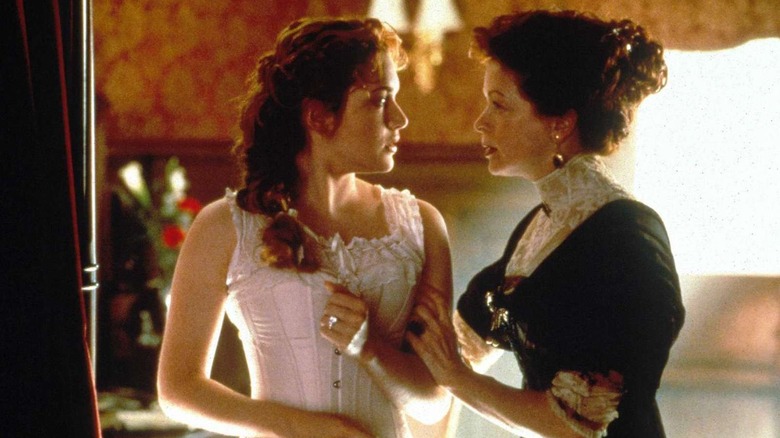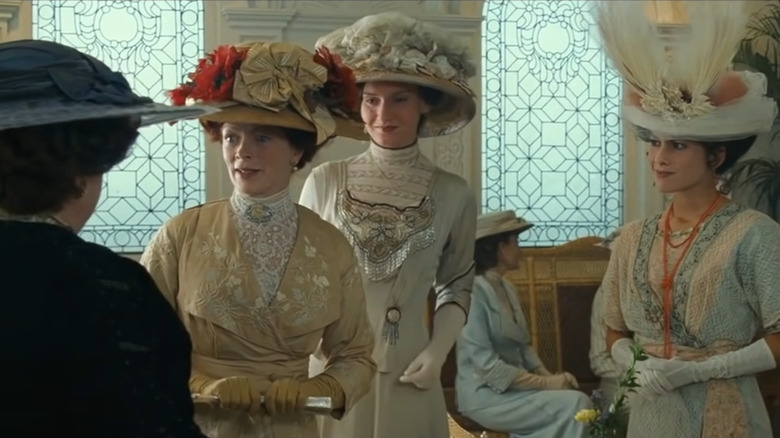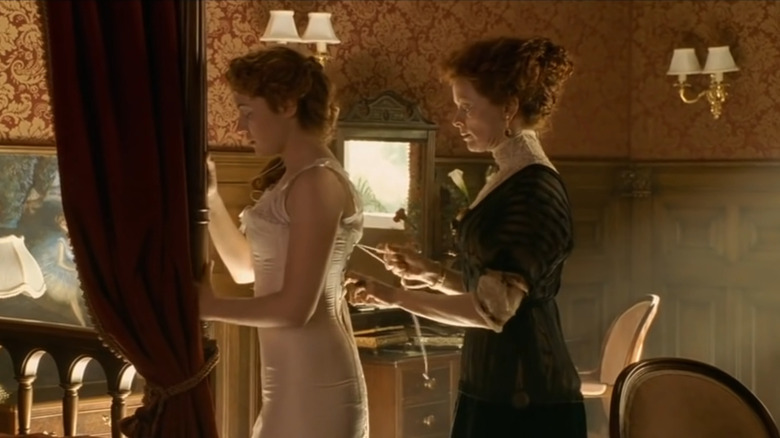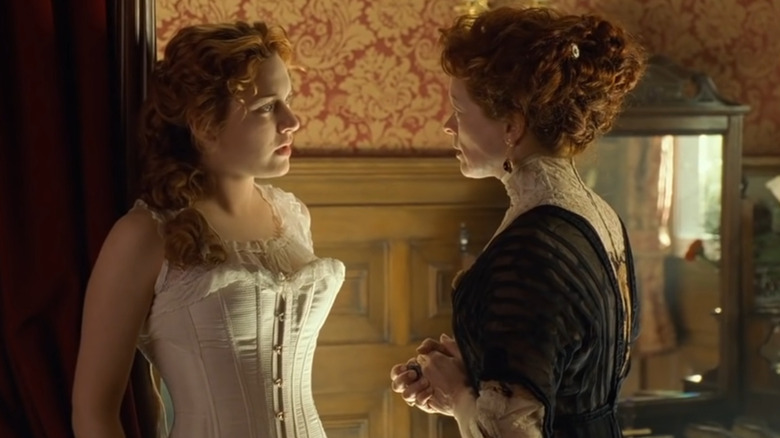
(To celebrate "Titanic" and its impending 25th-anniversary re-release, we've put together a week of explorations, inquires, and deep dives into James Cameron's box office-smashing disaster epic.)
When James Cameron set out to make "Titanic," historical accuracy was paramount. He traveled to the actual wreck of the ship, which sunk on April 15, 1912, after striking an iceberg, killing over 1,500 souls. "Titanic" was a powerful piece of cinema, nominated for 14 Academy Awards, winning 11, including Best Picture and Best Director. It was the first film to reach the billion-dollar mark, making it the highest-grossing film in Paramount Pictures' history until it was dethroned just this January by "Top Gun: Maverick."
If there is some way you've managed to live in this world and not know about "Titanic," it's the story of the ocean liner that made its maiden voyage from Southampton, England, heading to New York City on April 10, 1912. The ship was called "unsinkable," making its mid-journey demise all the more shocking. In the film, Rose DeWitt Bukater (Kate Winslet) and her mother Ruth (Frances Fisher) are a formerly wealthy family that has fallen on hard times after the death of Rose's father. She's engaged against her will to the wealthy Cal Hockley (Billy Zane), a complete jerk who will ensure her family's financial stability. On the ship, she meets the poor yet enthusiastic artist Jack Dawson (Leonardo DiCaprio), who allows her the freedom to find who she is outside of the society she's used to. Of course, the ship sinks, bringing with it all the drama and tragedy that keeps us fascinated with the event over 100 years later.
In a 2017 ET Online story to celebrate the 20th anniversary of the film, Cameron and the cast, including Fisher, spoke about shooting the film, the historical accuracy, and one unexpected issue; time period-accurate underwear.
Wanting To Be Respectful Of The Tragedy

In the 20th anniversary story with ET Online, James Cameron said he felt a responsibility to the tragedy. As he explained:
"I think you can see it, and that came from diving the wreck. That came from really going to what is essentially a cemetery, a tomb if you will. And that imbued me with a sense of respect, to be respectful of the tragedy always, and not sensationalize and not turn it into a big adventure movie, a Poseidon Adventure type thing — not that there's anything wrong with that — but this was a real event, a real story. And then I think that became contagious across all the departments, all of whom felt that they needed to step up and do accurate, world-class work."
There is something about this event that really touches people. The tragedy of the loss of life is powerful, and the stories of what went wrong, who acted selfishly or selflessly, and what more could have been done (or steps that could have been taken before the launch) to save the passengers and crew still consume us. To be fair, so does the discussion of whether or not Jack could have fit on that door with Rose at the end, but let's not open that can of worms. I'll be honest and tell you that I will unfailingly tear up reading stories about this wreck, and I have no personal connections to the ship at all.
What I do have is sympathy for the actors in women's costumes, as that was an important part of the historical accuracy of the film
'Down To Our Underwear, Everything Was Real'

Frances Fisher said in the same interview, "Even the very last background player in the back of every shot was dressed completely authentically. Down to our underwear, everything was real." If you know anything about historical underwear, you'll know that this couldn't have been easy for the actors. In fact, Fisher outlines one of the problems for the women in the cast, particularly when they had to use the restroom. She says:
"The women in our dresses couldn't fit into these thin little port-a-potties, so we had to be driven back to the dressing rooms, standing up in a truck because you couldn't sit down. It was really hard, even in the vans, to get in those big skirts, so we would all time it together. We didn't want Jim [Cameron] to have to wait for us. It ended up being about a 20-minute thing every time."
The style for more well-to-do women of the time wasn't quite the giant skirts of decades before. The lines were much slimmer, but that didn't mean the things underneath were any less complicated. From what I can see in the picture above, some of what Rose is wearing might be a bit of a throwback to a few years earlier, but to be fair, they don't have money to spend on things that couldn't be seen. Let me give you a quick run-through of underwear history, and you'll get an idea of why attempting to pee in a port-a-potty would have been a nightmare for the actors.
That's A Whole Lot Of Layers

First, fashion is a nebulous thing. We don't buy a whole new wardrobe whenever a new style appears. Some older pieces often remained in a collection because many things had to be handmade, either by you or by a seamstress. The style at the time involved a lot of layering. First, women would wear a chemise under their corsets. It was like a long, fluttery shirt, often with embellished straps, as you can see above, or light/no straps for the evening. It protected the body from the corset and was far more easily washed than the corset.
Most of the corsets of the time stopped below or mid-bust, meaning that some women wore brassieres for support, though some didn't. What Rose appears to be wearing here does cover the bust, so it might be older or just a different style. The corset itself wasn't laced super tightly around the waist. In fact, at this time, it was more to slim the hips for the new, more slender skirt silhouette.
That chemise we are seeing on Rose might have actually been a combination, which combined the chemise and drawers or knickers, which were leg coverings with a split crotch for bathroom use. (Separate pieces and combinations were both used in 1912.) Then you would have a corset cover garment, which would smooth out the lines and was often embellished with buttons or ribbons. You might also have petticoats over the whole thing, which were decorated at the bottom and often had some flounces. Then the dress goes over that. Not convenient if you're in a rush to pee.
It's complicated, especially if you want to stay hydrated during a shoot. Still, the attention to historical detail is wonderful to this history nerd.
Read this next: The 15 Best Historical Epic Movies Ranked
The post Titanic's Cast Had To Deal With The Hassle Of Historically Accurate Underwear appeared first on /Film.
0 Comments